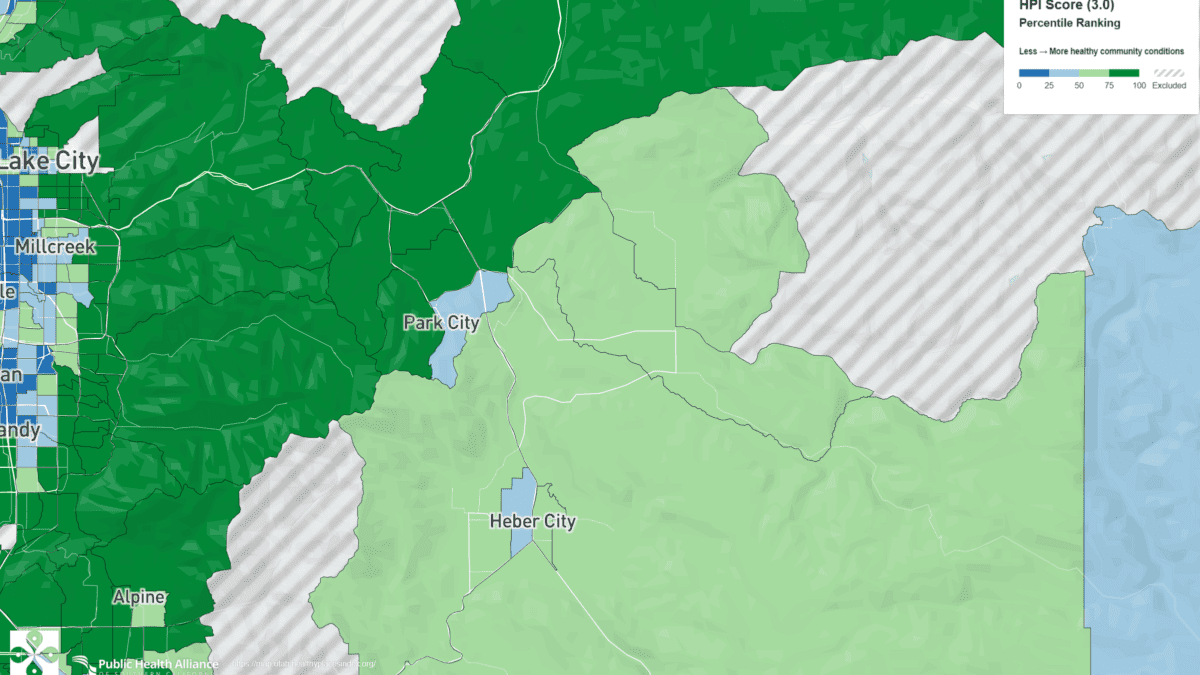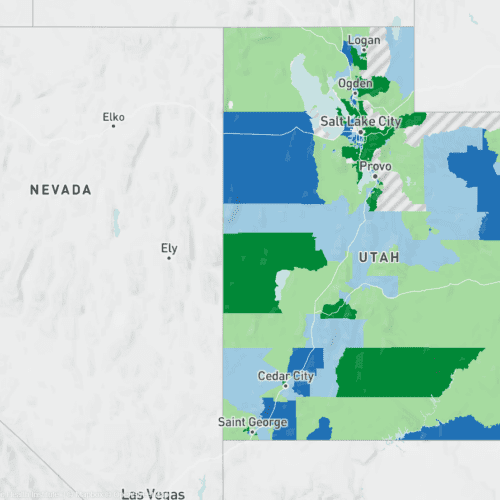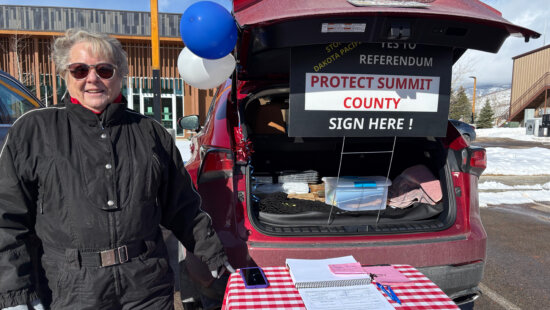Neighbors Magazines
Where does Park City rank in the Utah Healthy Places Index?

Utah Health Places Index (HPI) percentile ranking. Photo: HPI
By Rich Ellis
Of the 324 towns and cities in Utah, which is the “healthiest”? If you thought of Park City, think again.
In October 2022, the Utah Department of Health and Human Services (DHHS) quietly launched the Utah Health Places Index (HPI), a mapping and data visualization tool. Second to my incredible wife and partner, it’s one of the best things Utah has imported from California.
That’s right—HPI is a collaboration between DHHS and the Public Health Alliance of Southern California, a nonprofit. First launched in the Golden State, it helps policymakers and community leaders identify opportunities to improve health equity and outcomes.
“We know that where people live really impacts their health,” said Sarah Hodson, Deputy Director at DHHS’s Office of Health Promotion and Prevention. “And we wanted a tool to help us have a better understanding of that.”
But what does DHHS mean by “health”?
In Park City, “health” is often distilled into a lifestyle. It’s about how we exercise, eat and play. It’s about cold therapy, heat therapy, fasting, or whatever’s trendy. It’s about athleisure, pickleball and e-bikes.
Here’s the thing: the health of a community is not the aggregate of our personal habits but rather a reflection of environmental conditions. As Hodson shared, a popular saying in public health is that “Your zip code is more important than your genetic code.”

HPI provides a health score for almost every Census tract (and zip code) in Utah. The score is a composite of 20 social indicators that have been linked to life expectancy at birth in Utah specifically. The data comes from public sources, including the U.S. Census Bureau’s American Community Survey and the Behavioral Risk Factor Surveillance System (BRFSS), a health survey conducted in Utah since 1984.
The higher a neighborhood’s HPI score, the longer its residents are predicted to live. So, how do the towns of greater Park City score?
Based on data averaged from 2015 to 2019, Summit Park ranks second in the state with a 99.6 out of 100 health rating (which I unscientifically attribute to the backcountry skiing out their front doors). Snyderville places sixth and Silver Summit seventh. Meanwhile, Park City proper is 77th out of Utah’s 324 towns and cities, with a score of 77.1.
Why the gap? Despite ranking highly for education, transportation and economic opportunities, Park City has a homeownership rate of 63%. To put that in perspective, about 89% of towns in Utah have a higher homeownership rate than Park City, which also gets dinged for its housing costs. Almost 9% of Park City homeowners and 17.5% of renters pay 50% or more of their income on housing. Mind you, that data comes from before the COVID-19 surge in housing costs.
Costly housing affects life expectancy by leaving less money for healthy food and medical expenses. It might also compel someone to work longer hours, eating up time for rest, exercise, cooking and relationships. HPI also notes that high housing costs are associated with stress and depression.
Housing isn’t the only counterintuitive measure of health. Park City has a Census response rate of 33.7%—that’s 288th in the state. According to the HPI, the response rate is “an indicator of both social power and social cohesion.” Like other HPI indicators, it’s also a predictor of life expectancy.
Unsurprisingly, Park City has among the highest per capita income in Utah and a high employment rate. Nevertheless, 20% of residents live below the poverty line, which HPI defines as less than 200% of the federal poverty level. That’d be $29,160 in 2023 for a single-member household. In both Silver Summit and Snyderville, less than 2% of residents live in poverty, while in Summit Park, the rate is 12%.
So, what is the absolute “healthiest” town in Utah? Emigration Canyon, no thanks to the ridiculously delicious biscuits at Ruth’s Diner.
Pooled together as one neighborhood, Park City, Summit Park, Silver Summit and Snyderville score in the 97th percentile for HPI. So that’s reassuring. Tragically, the five lowest HPI scores belong to towns within the Navajo Nation.
Hodson encourages Utahns to view this data in a positive light. “[HPI is] really looking at what the assets are within a community and where there are opportunities for improvement,” she said. When DHHS updates the HPI data early in 2024, we’ll surely find more of those opportunities.
HPI is a way to reflect on our community and discover ways we can flourish here together. That, too, is the spirit of this column. Park City may not be the healthiest place in Utah, but it’s home. The better we understand it, the better we can grow and preserve it for generations to come.


















